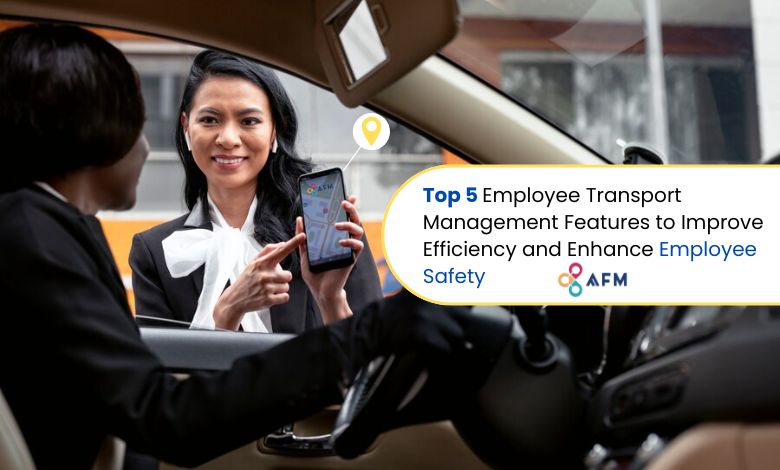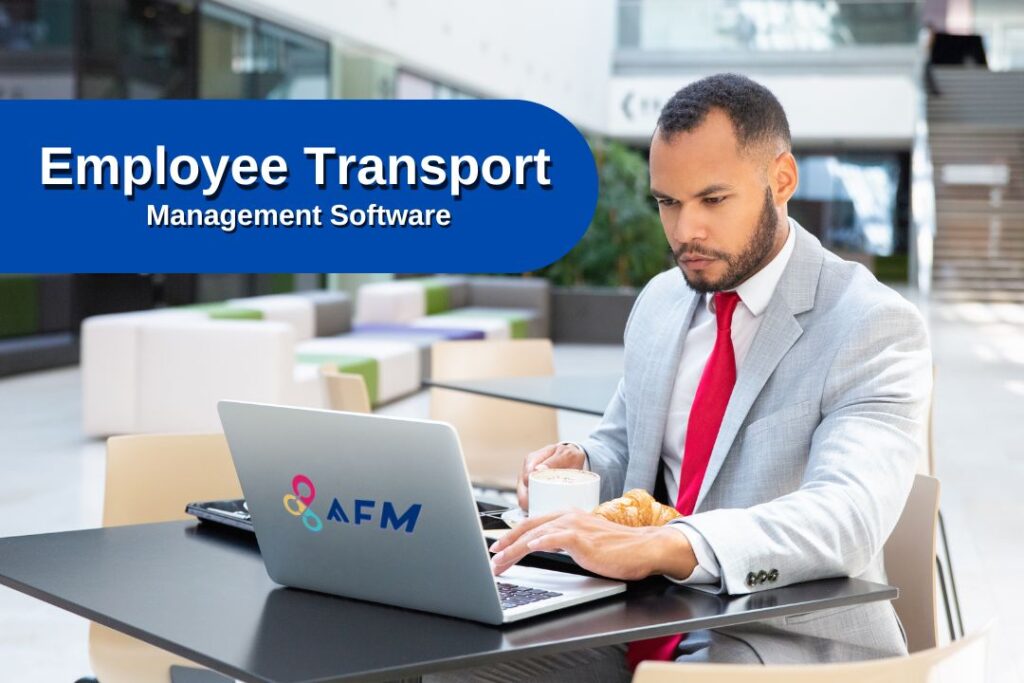Top 5 Employee Transport Management Features to Improve Efficiency and Enhance Employee Safety

The hassle of commuting—navigating traffic, waiting for public transport, and safety concerns, can wear down even the most dedicated employees. In fact, a report says 72% of employees feel frustrated because of the hassle of everyday commute.
An employee transportation automation solution can address these issues and provide a smooth, secure, and efficient way for employees to get to work.
Keep reading to discover the top features that can elevate both efficiency and employee safety in your transportation management.
What is an Employee Transport Management Software?
An Employee Transport Management System like AFM streamlines and optimizes the transportation of employees to and from work.
It automates scheduling and routing, allowing real-time vehicle tracking for enhanced transparency. Employee safety features, such as panic buttons, safe reach calls and driver recognition, ensure a secure commuting experience for employees during late hours and odd times.
The tool also facilitates communication between drivers and employees through in-app messaging, while collecting data analytics to identify inefficiencies.
Top 5 Employee Transport Management Features For Employee Safety and Efficiency

1. Safe Commute
Features like live tracking allow organizations and employees to monitor the vehicle’s location in real-time, providing peace of mind during commutes. The share ride option enables employees to share their ride details with family and friends, thereby adding an additional layer of security in cases of emergency.
Employees can also activate various panic buttons or alarms during emergencies, alerting designated contacts or authorities immediately. Features like option for escort for women employees and no first pick-up or last drop-off help preventing mishaps.
Besides, the driver face recognition feature enhances security by ensuring that only verified drivers are operating the vehicles.
Additionally, speed and route deviation alerts notify administrators if a vehicle exceeds speed limits or strays from its assigned route, helping to maintain safety and adherence to protocols.
2. Intelligent Routing

An effective transport management system requires intelligent routing capabilities.
This includes multi-maps based routing that utilizes different mapping services for optimal pathfinding. By integrating traffic patterns based on Google and internal databases, the system can adapt to real-time conditions, minimizing delays.
The option for multi-site routing is beneficial for organizations with multiple locations, allowing seamless transportation between them.
Preset route timings ensure that vehicles leave at optimal times, while manual routing options allow managers to customize routes based on specific needs or events, such as special client visits or employee shifts.
3. Rostering & Vehicle Allocation

This is a critical feature to managing transportation resources effectively. Auto vehicle allocation uses GPS and driver phone data to assign the most suitable vehicle for each trip, optimizing both time and costs. Escort optimization during allocation ensures that vulnerable employees, such as women commuting late at night, have appropriate support.
The system caters to all types of rostering, whether it’s team, self-authorized, or manager-authorized, allowing for flexibility and better management of transport needs. Additionally, it can handle spot rental requests, accommodating last-minute transportation needs of employees.
4. Compliance & Audit
Vehicle compliance alerts notify managers of any maintenance or compliance issues with vehicles, while driving pattern data collection provides insights into driver behavior, promoting safety and accountability. A comprehensive trip sheet documents each journey, supporting transparency and audit requirements. Route replay functionality allows organizations to review previous trips, ensuring that all protocols were followed.
5. Billing & MIS
An effective Employee Transport Solution should streamline financial management through billing and MIS features. Accurate billing is facilitated with records reconciled between drivers and the company, ensuring correct invoicing.
Driver behavior analysis helps identify patterns that could affect operational costs, enabling targeted training and improvement. The system generates multiple MIS reports, providing insights into usage, costs, and performance metrics.
Finally, vendor/driver performance analysis helps organizations assess and select the best transport partners, ensuring that the highest standards are maintained in employee transport services.
Conclusion
In addition to the above, an end-to-end employee transport management software also offers advanced features like vendor-ratio based auto vehicle allocation and seamless employee attendance.These features collectively enhance the efficiency, safety, and reliability of employee transport management, ensuring a better commuting experience for all involved.
Among the various tools available, AFM stands out as one of the best solutions on the market, offering a complete suite of features designed to address the unique challenges of employee transportation management. With AFM, organizations can ensure a hassle-free and secure commuting experience while gaining valuable insights into operational performance.
Connect with us today and discover how it can transform your organization’s commuting practices, ensuring safety, efficiency, and peace of mind for every employee.
FAQ’S
What is an employee transport management system?
An employee transport management system (ETMS) is a software solution that helps organizations manage and optimize their employee transportation operations. It includes features like real-time tracking, route optimization, vehicle management, and driver scheduling to improve efficiency and safety.
How does real-time tracking enhance employee safety?
Real-time tracking allows employers to monitor the exact location of vehicles at any given time. This ensures that employees are safe during transit, and if there is an emergency or unexpected delay, prompt action can be taken to assist them.
How does route optimization improve transport efficiency?
Route optimization algorithms take into account factors like traffic, weather, and employee locations to determine the fastest, safest, and most fuel-efficient routes. This reduces travel time, fuel costs, and vehicle wear and tear while improving overall efficiency.
Can an employee transport management system be customized for my company’s needs?
Yes, most employee transport management systems can be tailored to meet your company’s specific needs, including custom reporting, branding, and integration with other systems such as payroll and HR software.
What are the benefits of digital attendance and trip logging in employee transport systems?
Digital attendance and trip logging automate the process of tracking employee commutes, improving accuracy and saving time. It also helps maintain records of employee trips, making it easier to manage schedules, ensure accountability, and generate reports for compliance or operational analysis.
Quick Read:- Key Features to Look for in a Modern School Bus GPS Tracking Solution